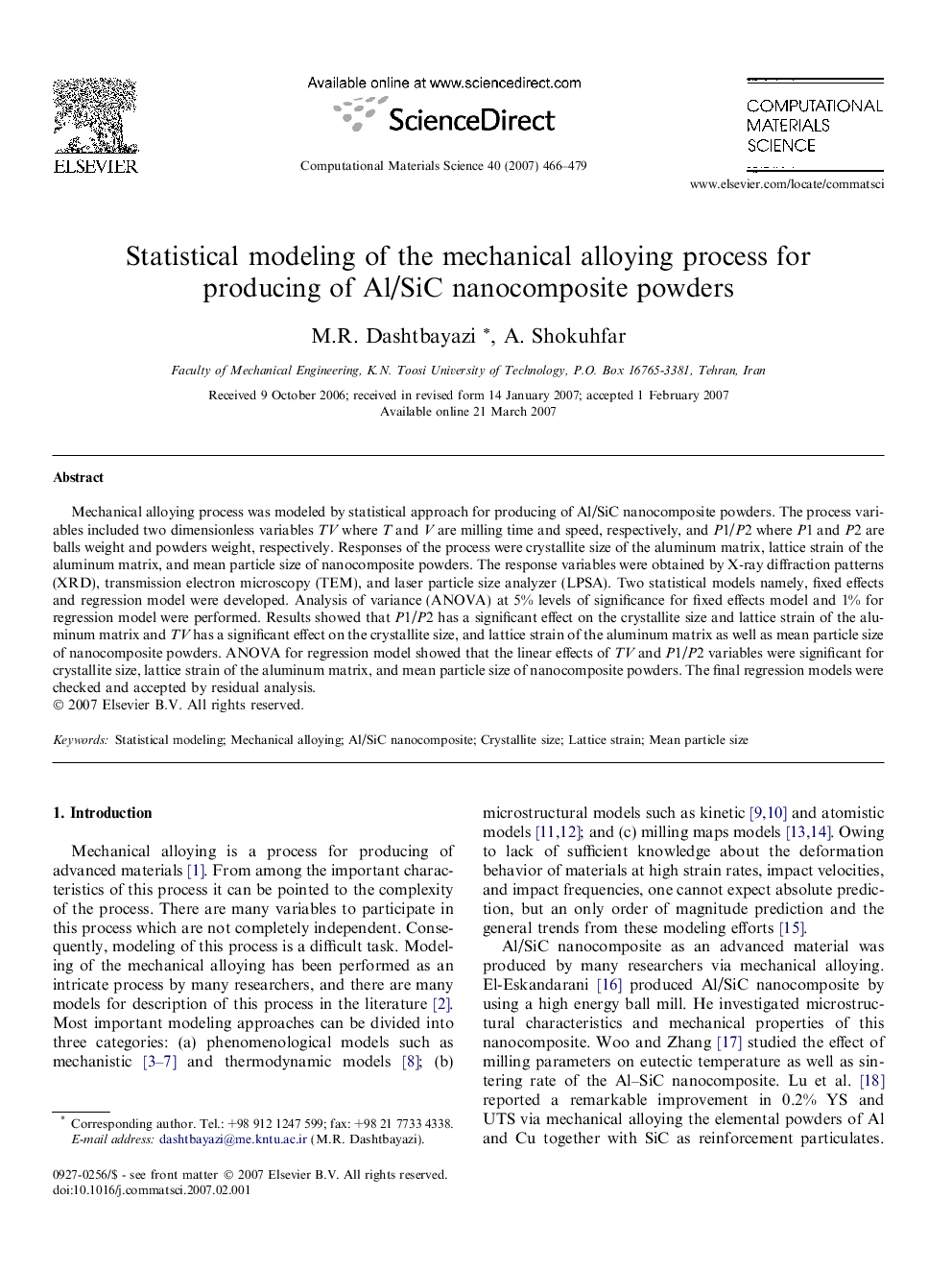| Article ID | Journal | Published Year | Pages | File Type |
|---|---|---|---|---|
| 1563668 | Computational Materials Science | 2007 | 14 Pages |
Mechanical alloying process was modeled by statistical approach for producing of Al/SiC nanocomposite powders. The process variables included two dimensionless variables TV where T and V are milling time and speed, respectively, and P1/P2 where P1 and P2 are balls weight and powders weight, respectively. Responses of the process were crystallite size of the aluminum matrix, lattice strain of the aluminum matrix, and mean particle size of nanocomposite powders. The response variables were obtained by X-ray diffraction patterns (XRD), transmission electron microscopy (TEM), and laser particle size analyzer (LPSA). Two statistical models namely, fixed effects and regression model were developed. Analysis of variance (ANOVA) at 5% levels of significance for fixed effects model and 1% for regression model were performed. Results showed that P1/P2 has a significant effect on the crystallite size, and lattice strain of the aluminum matrix and TV has a significant effect on the crystallite size, and lattice strain of the aluminum matrix as well as mean particle size of nanocomposite powders. ANOVA for regression model showed that the linear effects of TV and P1/P2 variables were significant for crystallite size, lattice strain of the aluminum matrix, and mean particle size of nanocomposite powders. The final regression models were checked and accepted by residual analysis.
